Span 59 cm / 23 in
Weight 32 g / 1.13 oz
The original Albessard Triavion also known as Peyret-Albessard Triavion was no glider. It had a powerplant installed in its nose – first an Anzani and later a Salmson radial with a 2-bladed propeller. Only one of this three-surface-aircraft was built and flown in France in 1926 and 1927. The Triavion‘s main wing span measured 11.50 m / 37 ft 9 in, its second wingspan 7.60 m / 24 ft 11 in, its length 7 m / 23 ft and gross weight was 550 kg / 1,213 lb.
Note: My model retains the shape of the wing planform and that of the empennage but it‘s unpowered as it is a chuck glider.
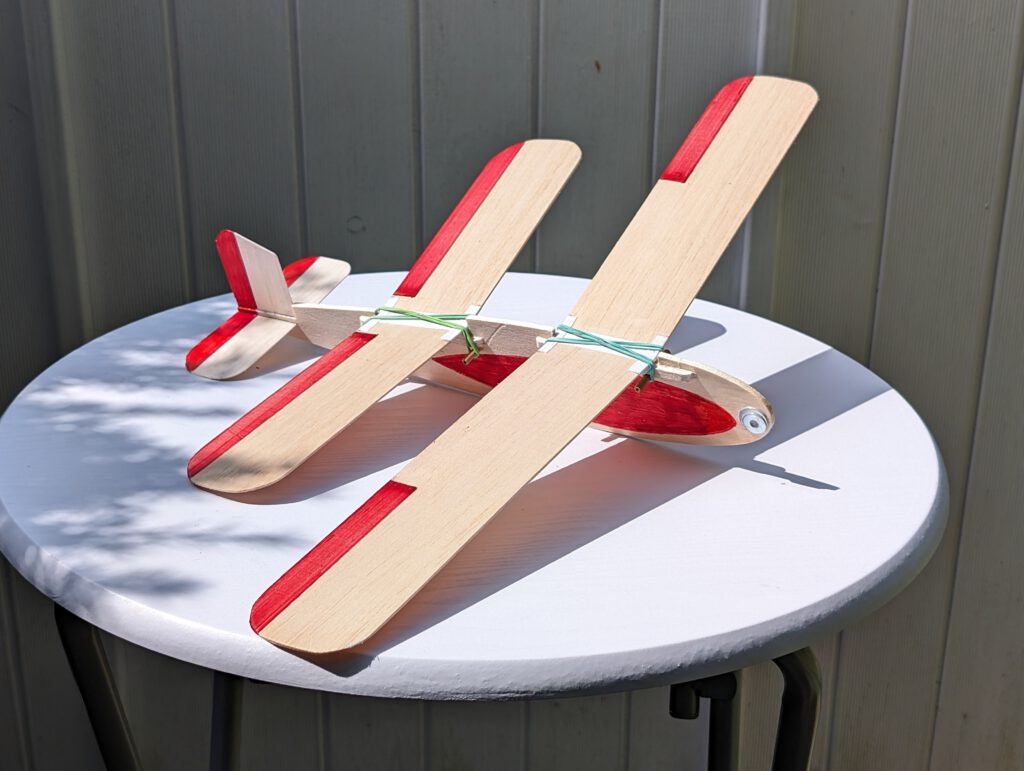
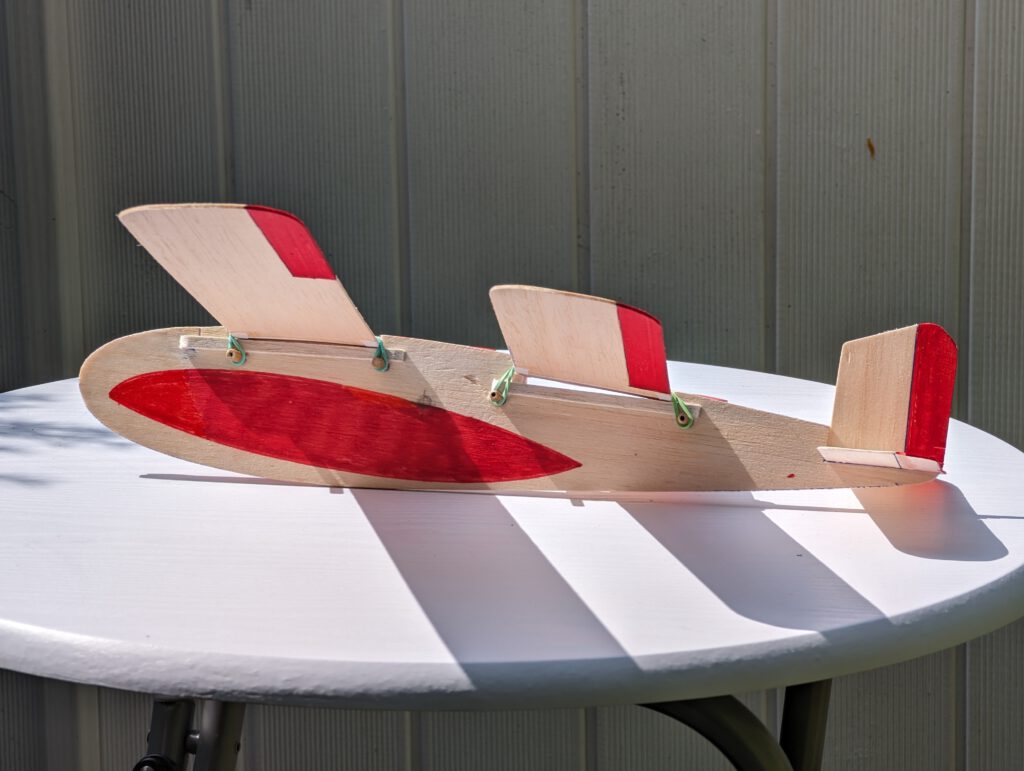
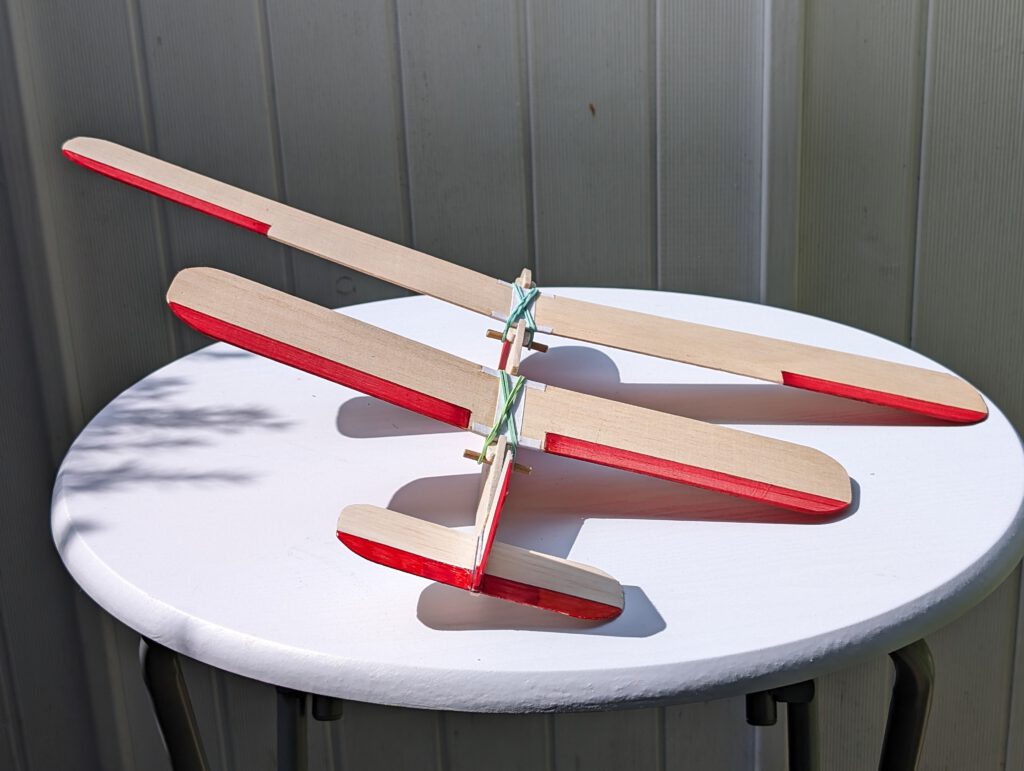
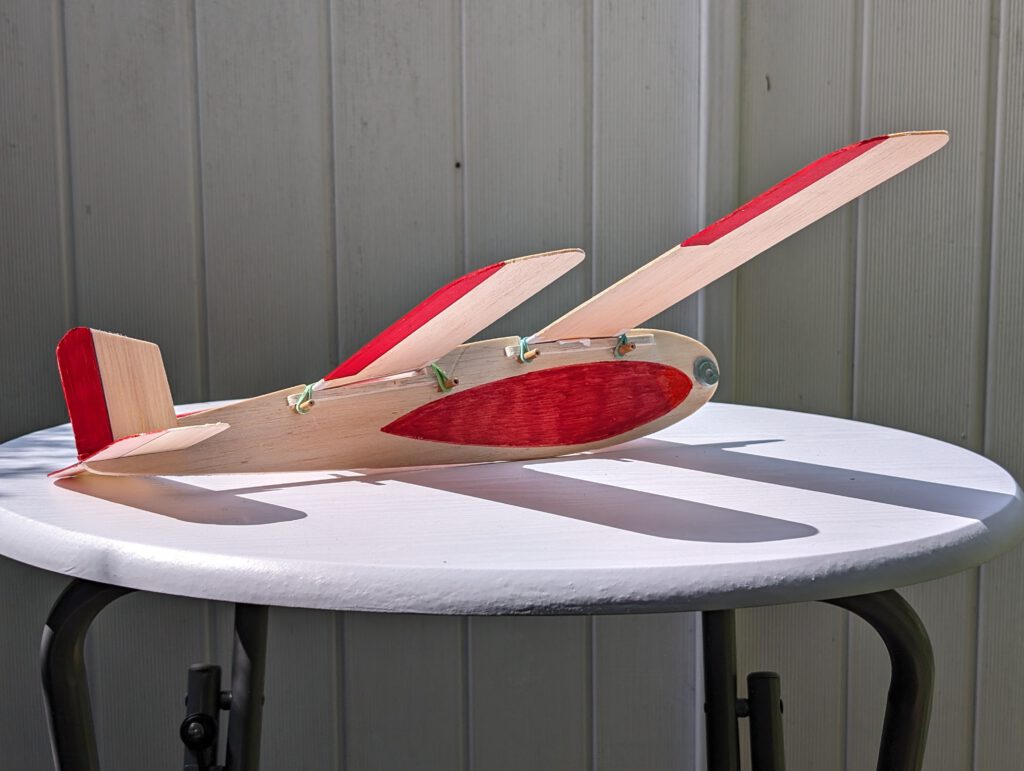
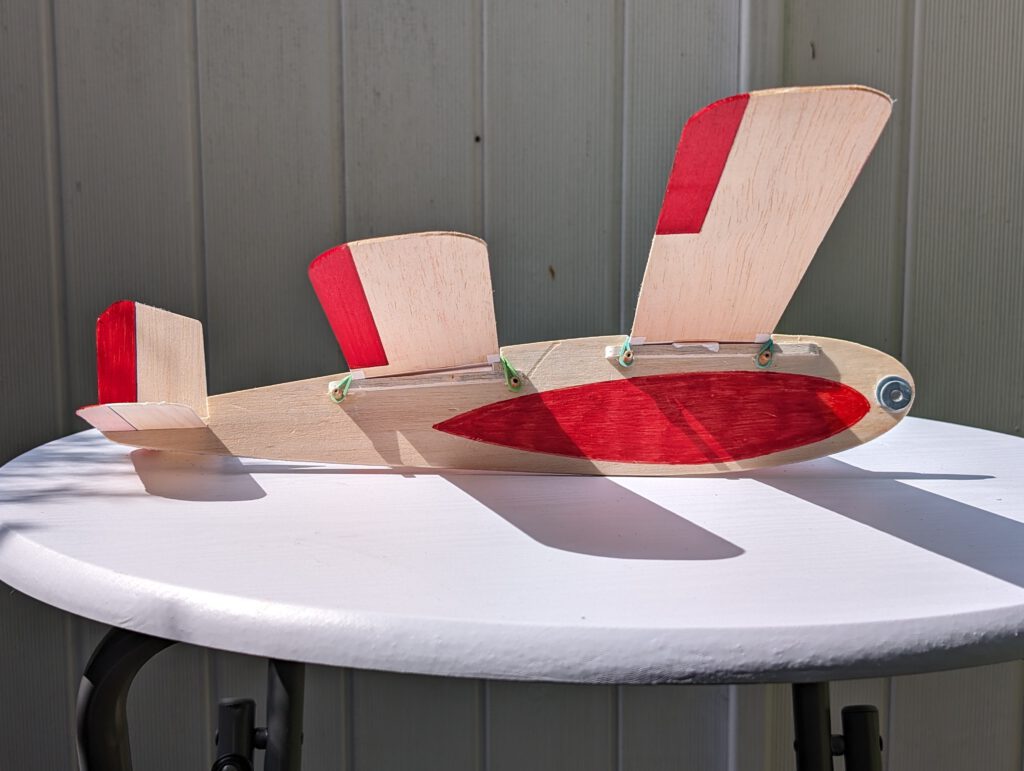
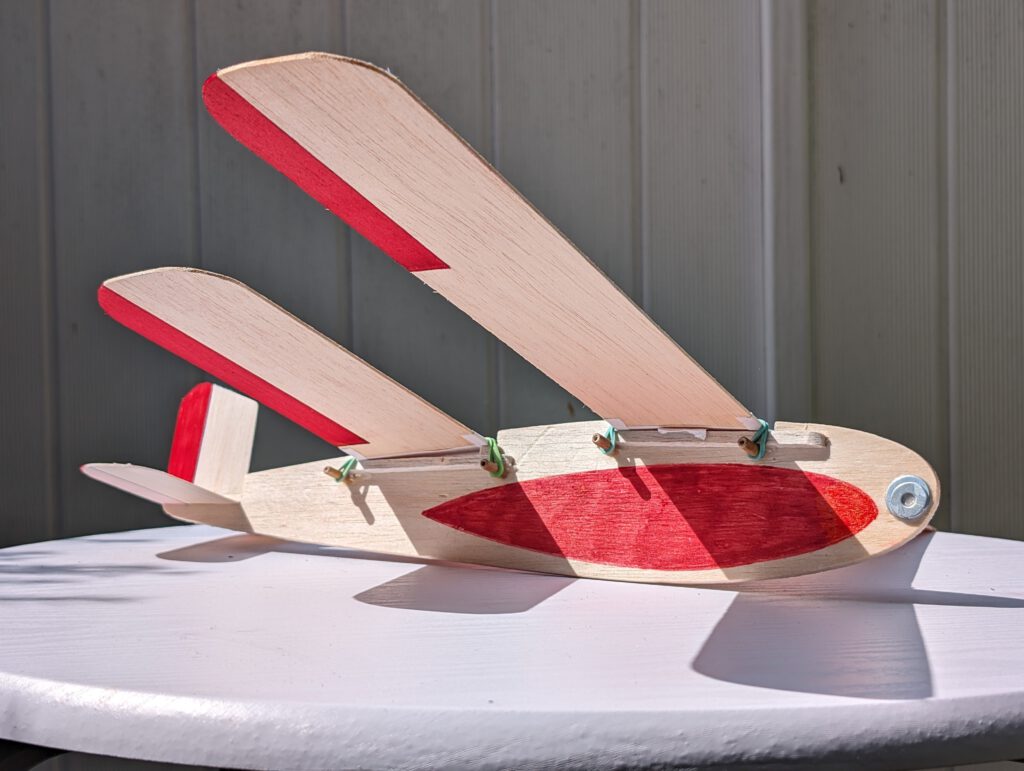
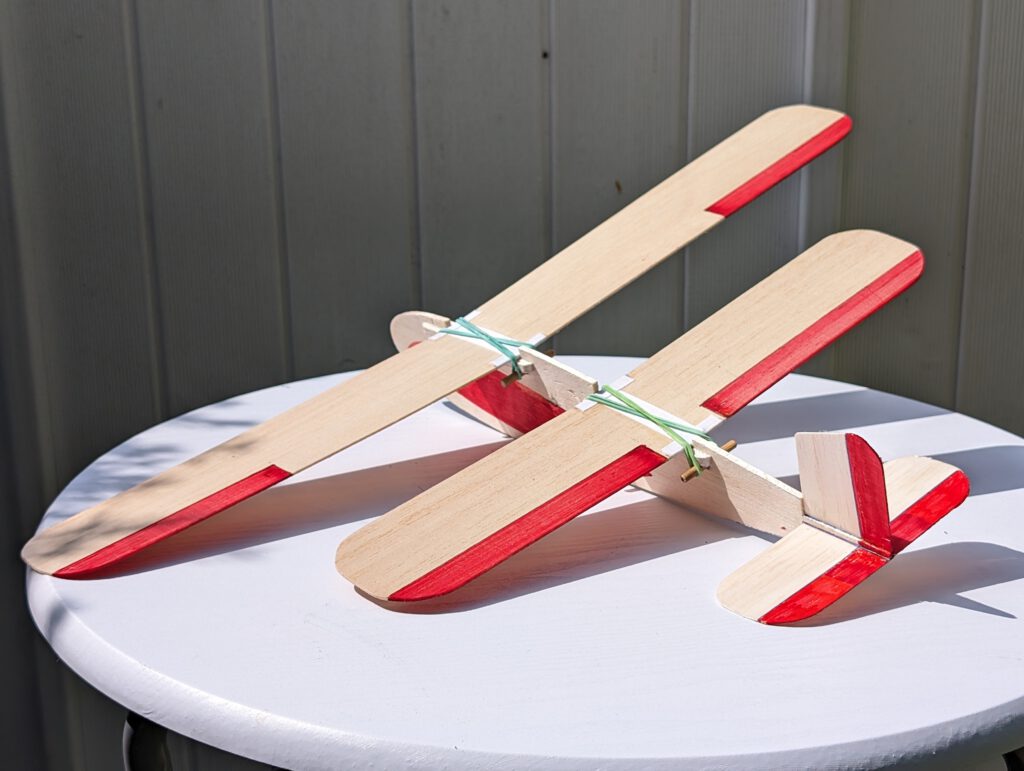
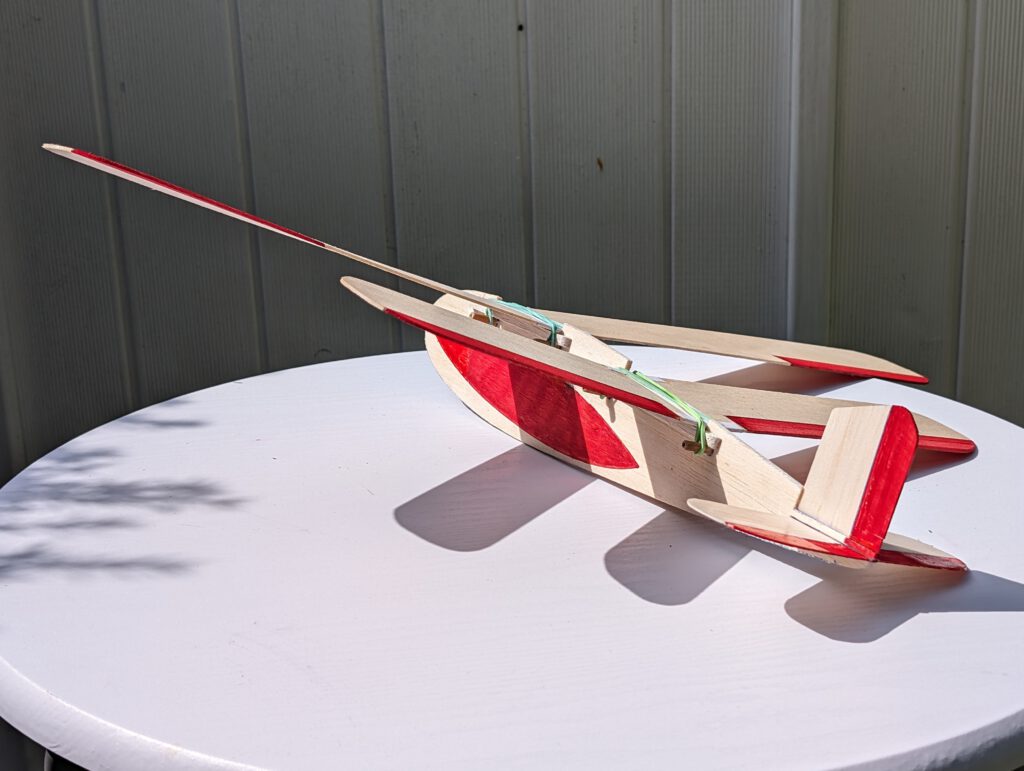
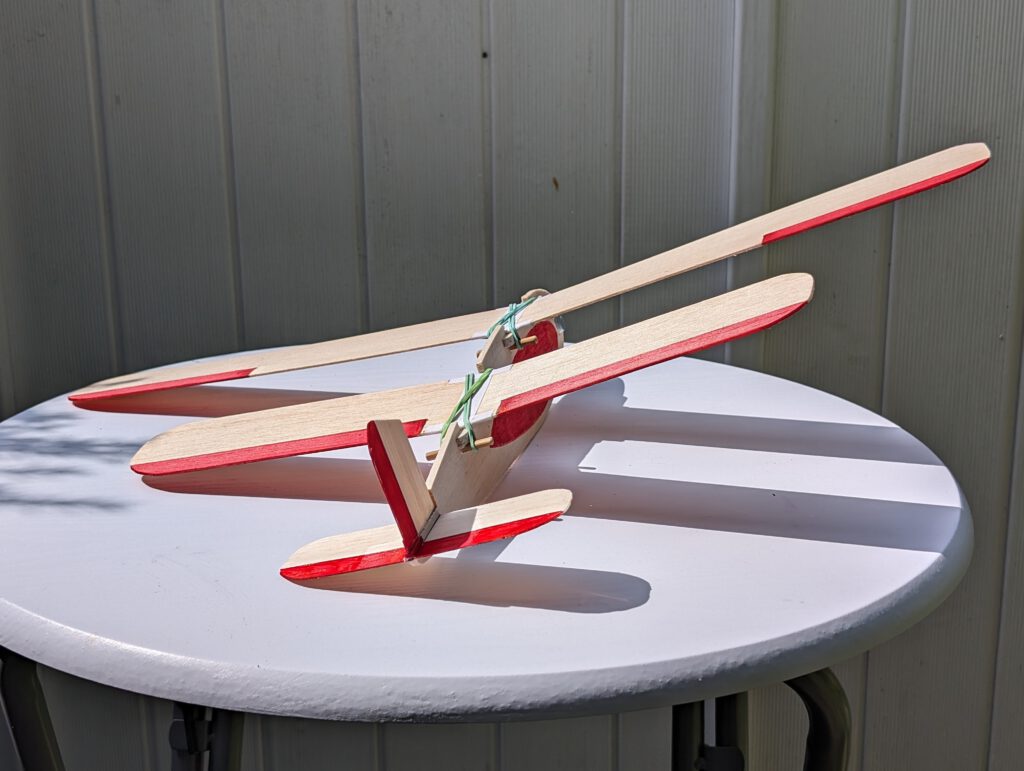
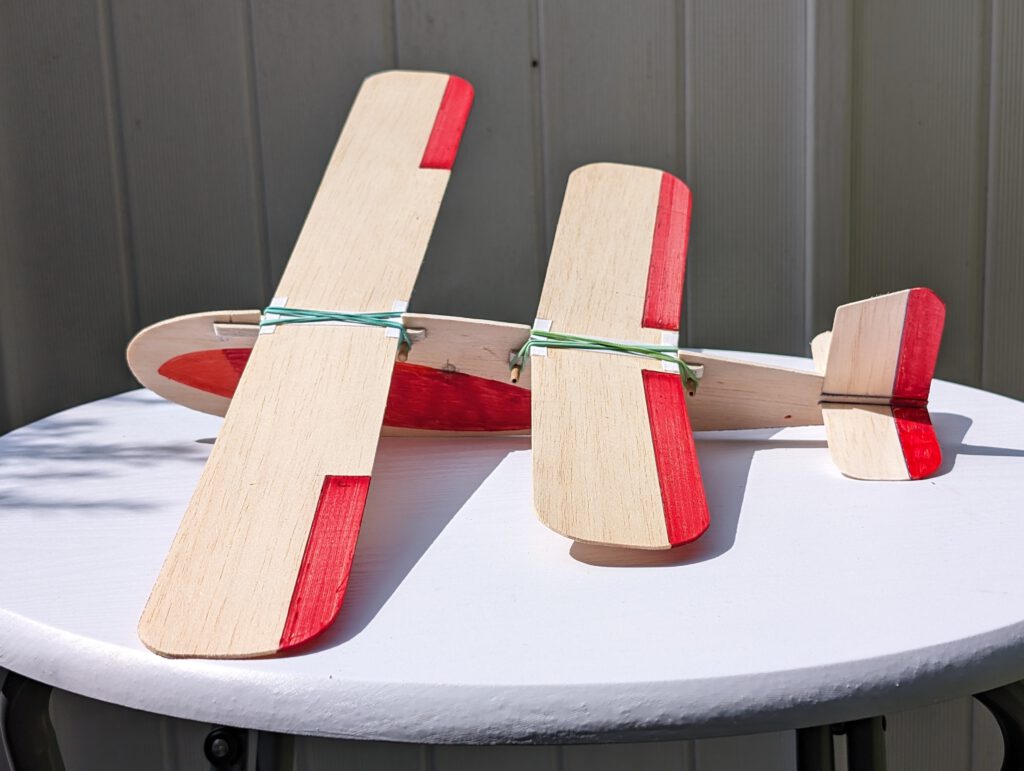
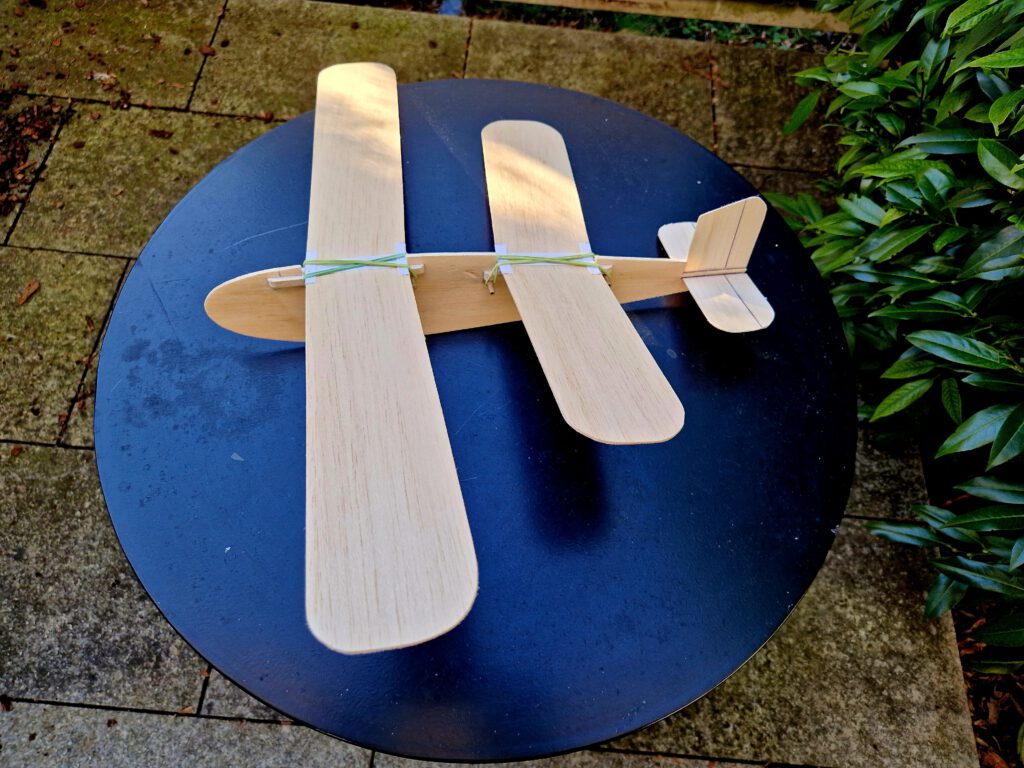
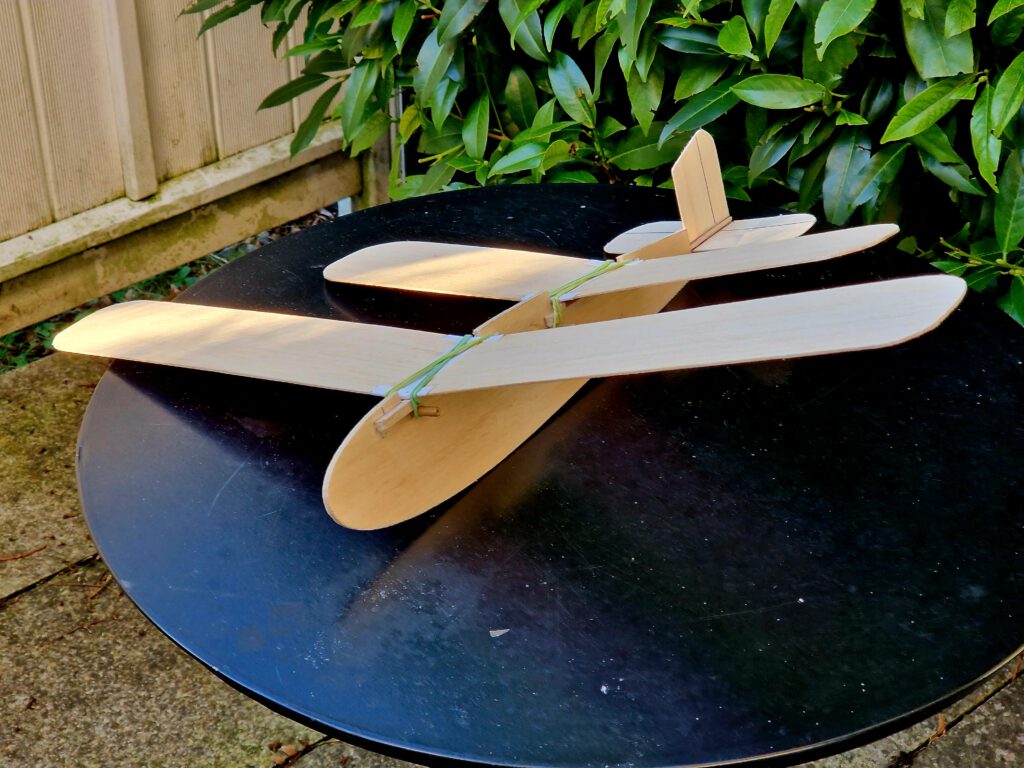
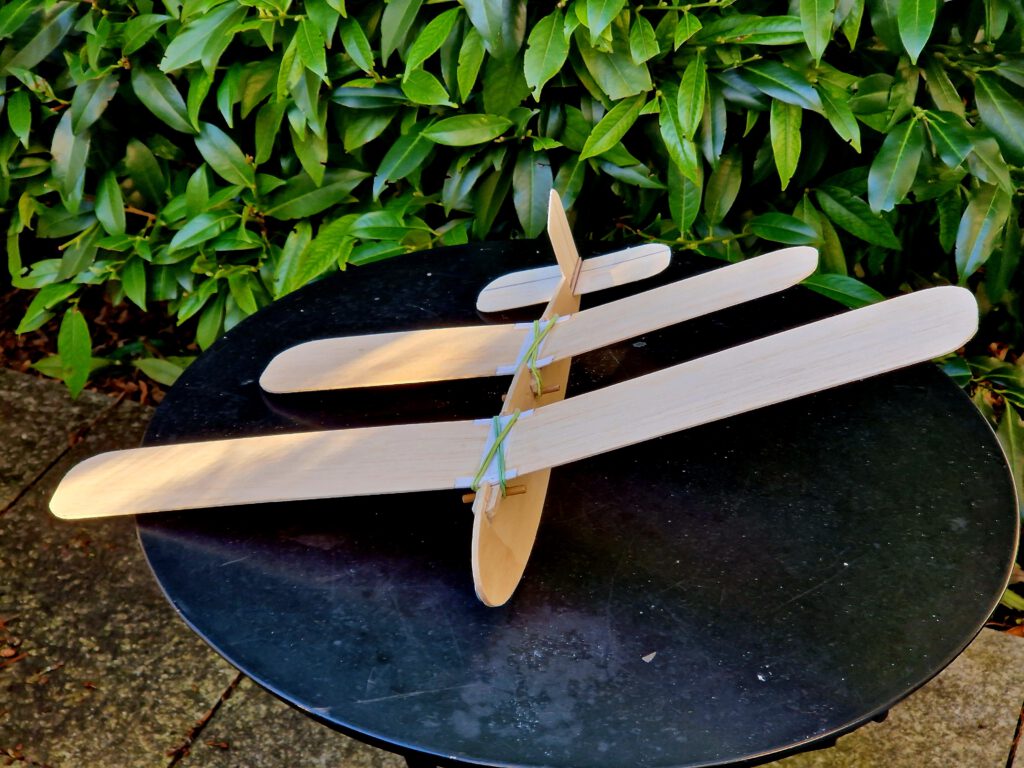
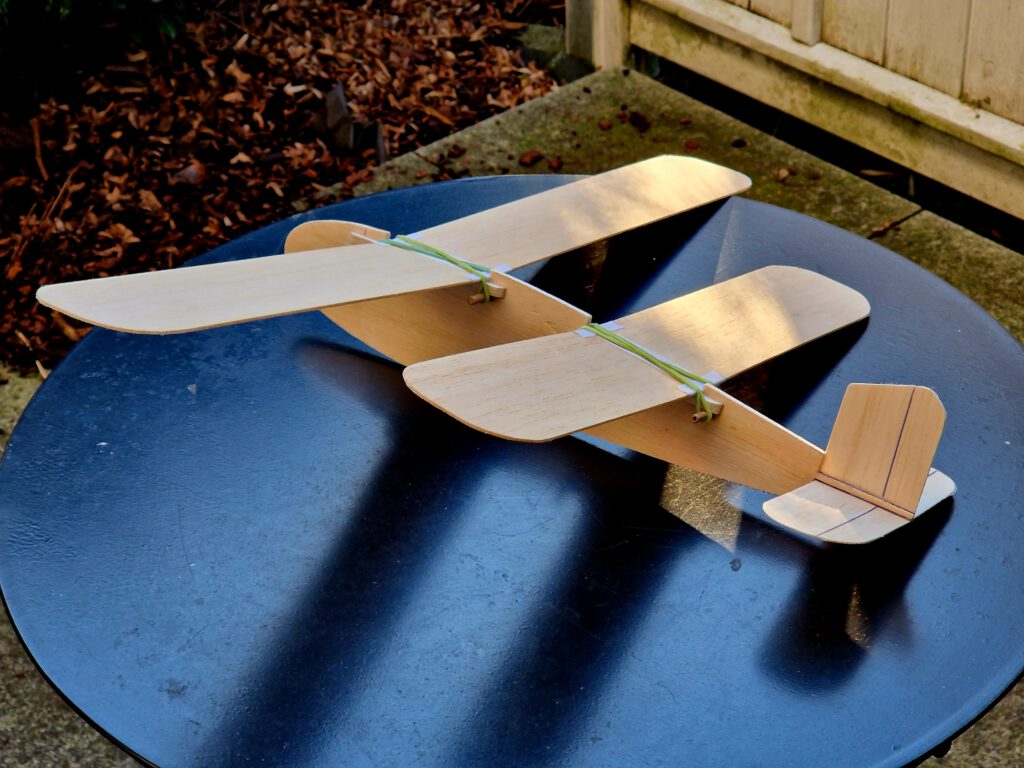
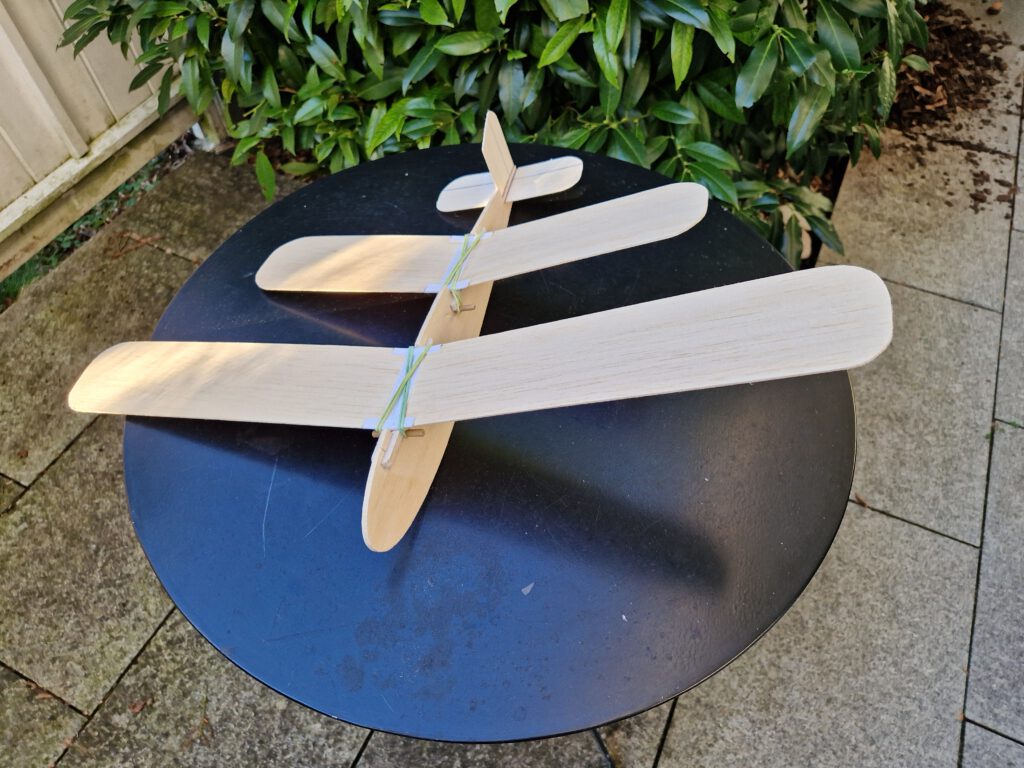
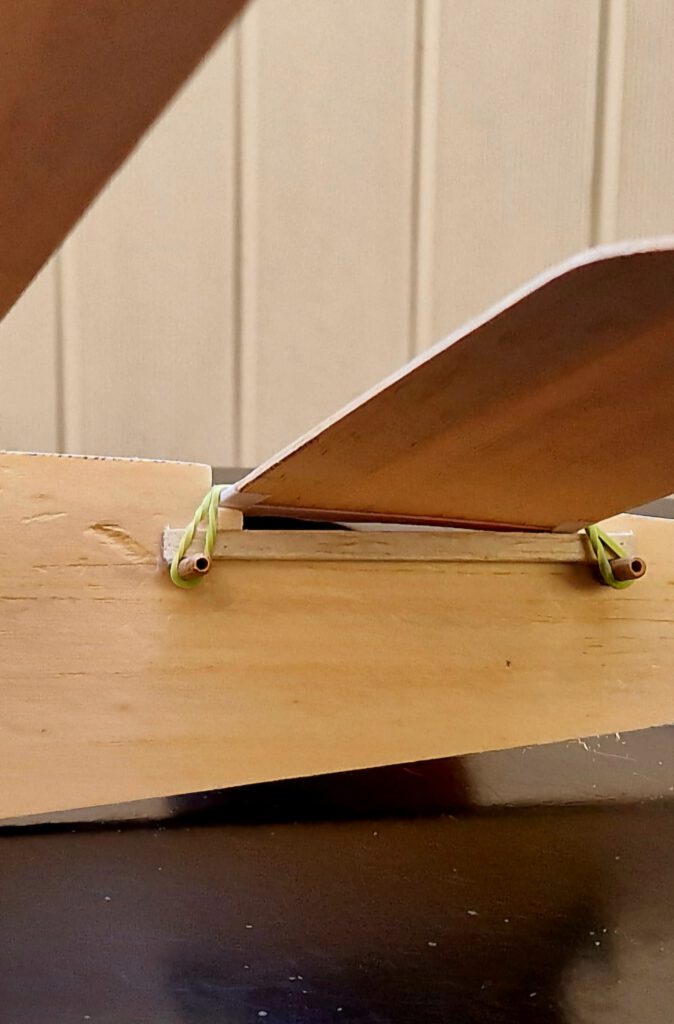
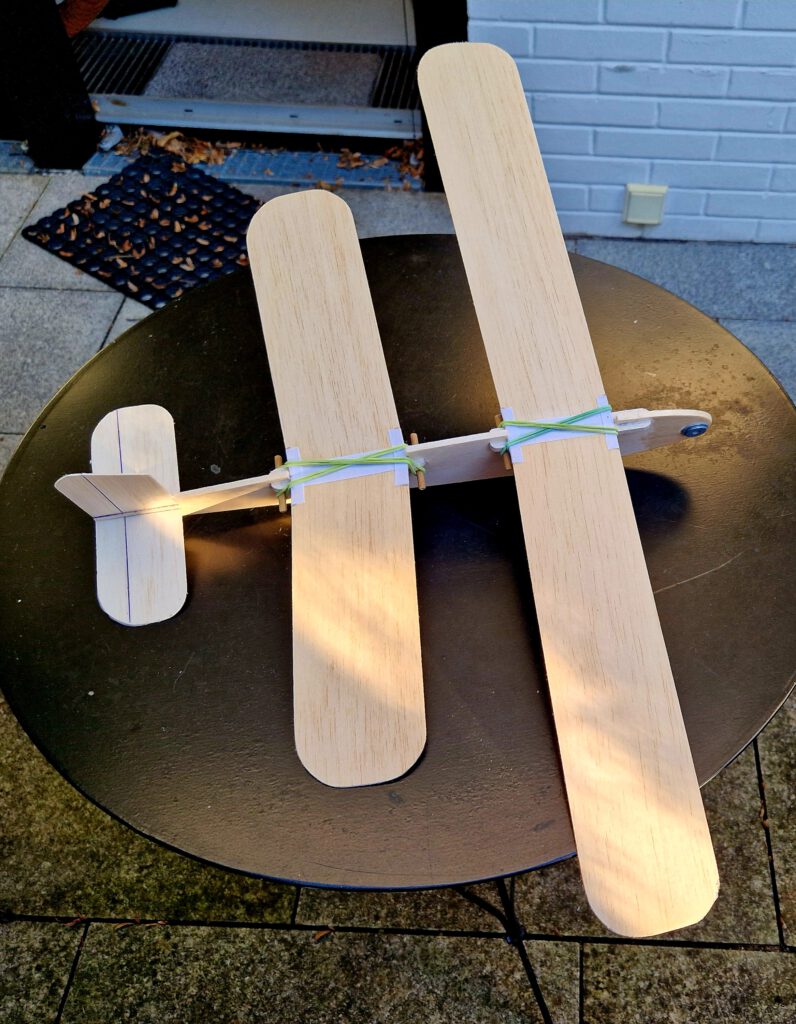
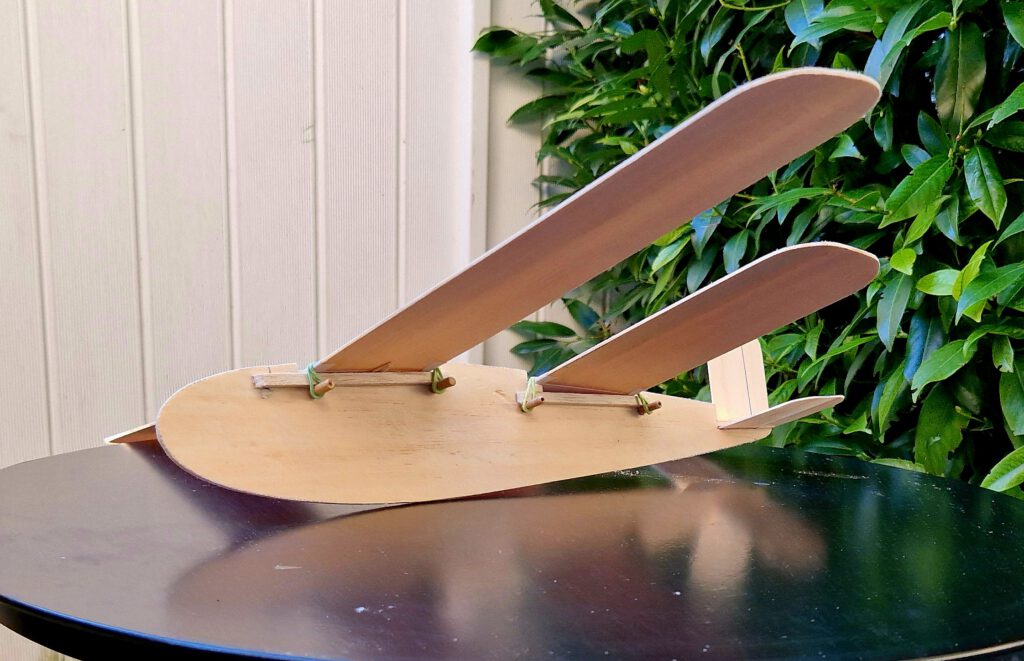
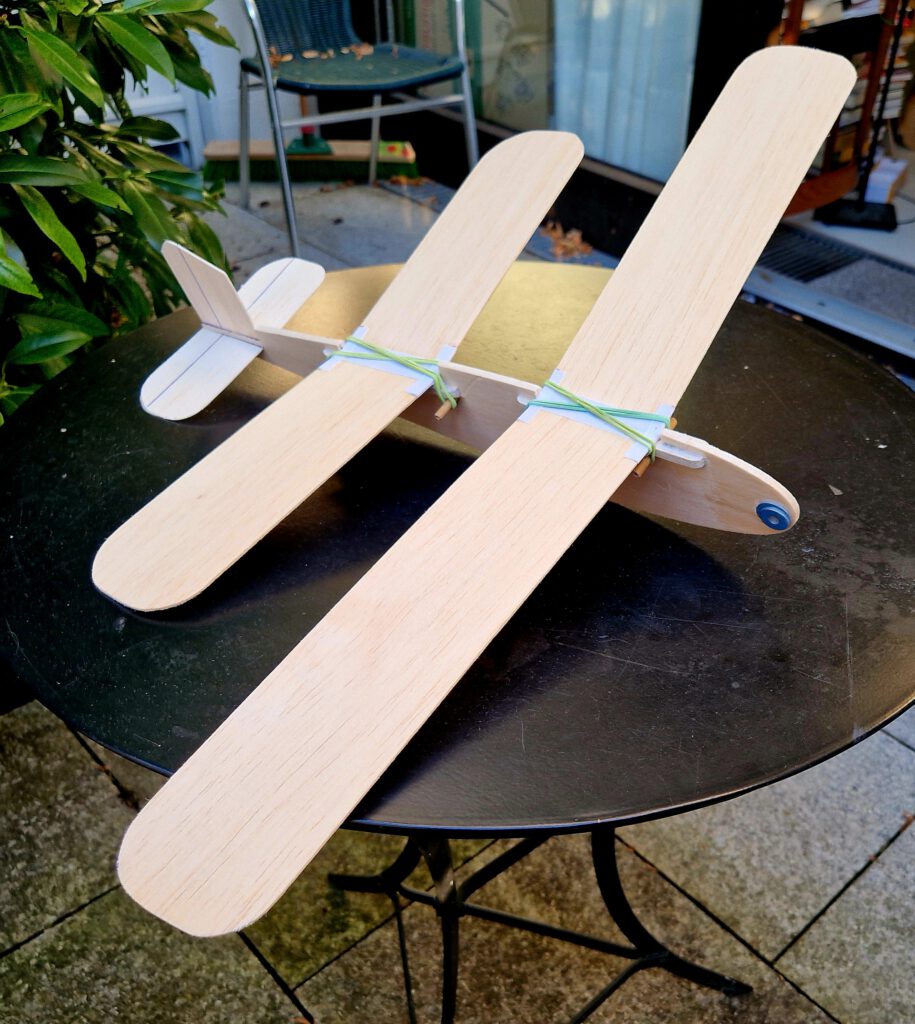
Building the balsa sheet glider Albessard Type Triavion.
Materials:
Fuselage: B 4; wing supports: B strips 5 x 5; main wing and center wing: B 1.5; bamboo dowels: 5 diameter; fin and horizontal stabilizer: B 1; Ballast: small piece of lead or scrap metal.
Assembly: (Sorry, no photographs)
Cut out all balsa parts according to plan. Sand well. Transfer outlines of rudders and ailerons from paper to wood with pen. Paint if desired at this stage.
Wings:
Fix one main wing half on building board with needles. Underlay wing tip of other main wing half according to given dihedral and cement. Let dry. Repeat procedure for center wing halves. Linen tape can be used to strengthen midwing section. Both wings need strengthening at those areas where rubber bands sit. So use linen/cotton tape for this purpose, cement in place.
Fuselage:
Make cutouts for both wings and for fin. Cut slot for horizontal stabilizer. Drill holes for bamboo dowels. First cement vertical stabilizer/fin to fuselage making sure that this part sits right in the center of the fin cutout. Check symmetry. Put aside and let dry.
Cement wing support strips in to their place on both sides of fuselage using clamps or clothespins. Cement bamboo dowels which should sit tight.
Final Assembly:
Set both wings on fuselage and tighten with rubber bands. Check symmetry. If necessary sand away small sections of wing support strips until wings sit a hundred percent symmetrically.
Strengthen nose section by dispersing some extra glue on both sides evenly.
Balance model in accordance to given CG on plan.
My Triavion needed a small balsa wedge where the leading edge of the center wing lays on its wing supports (see photo and plan).
Model is capable of extended flat glides and is a delight in the air.
Buon volo! (miłego lotu!)
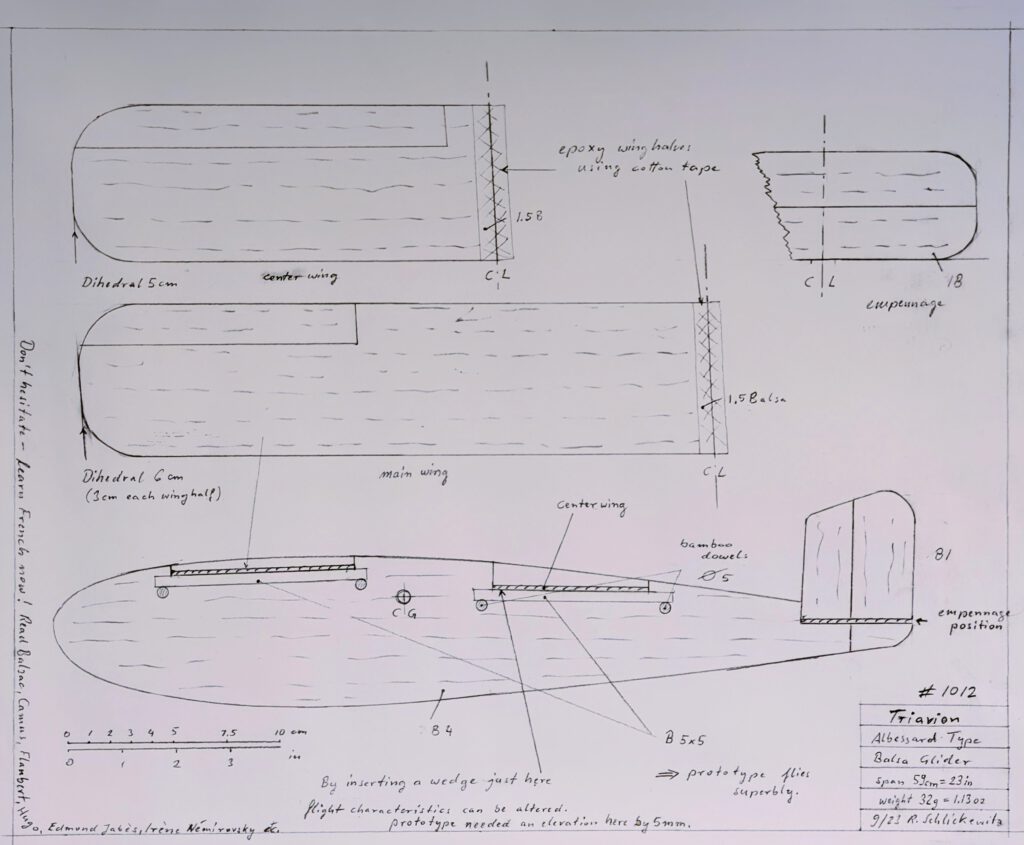
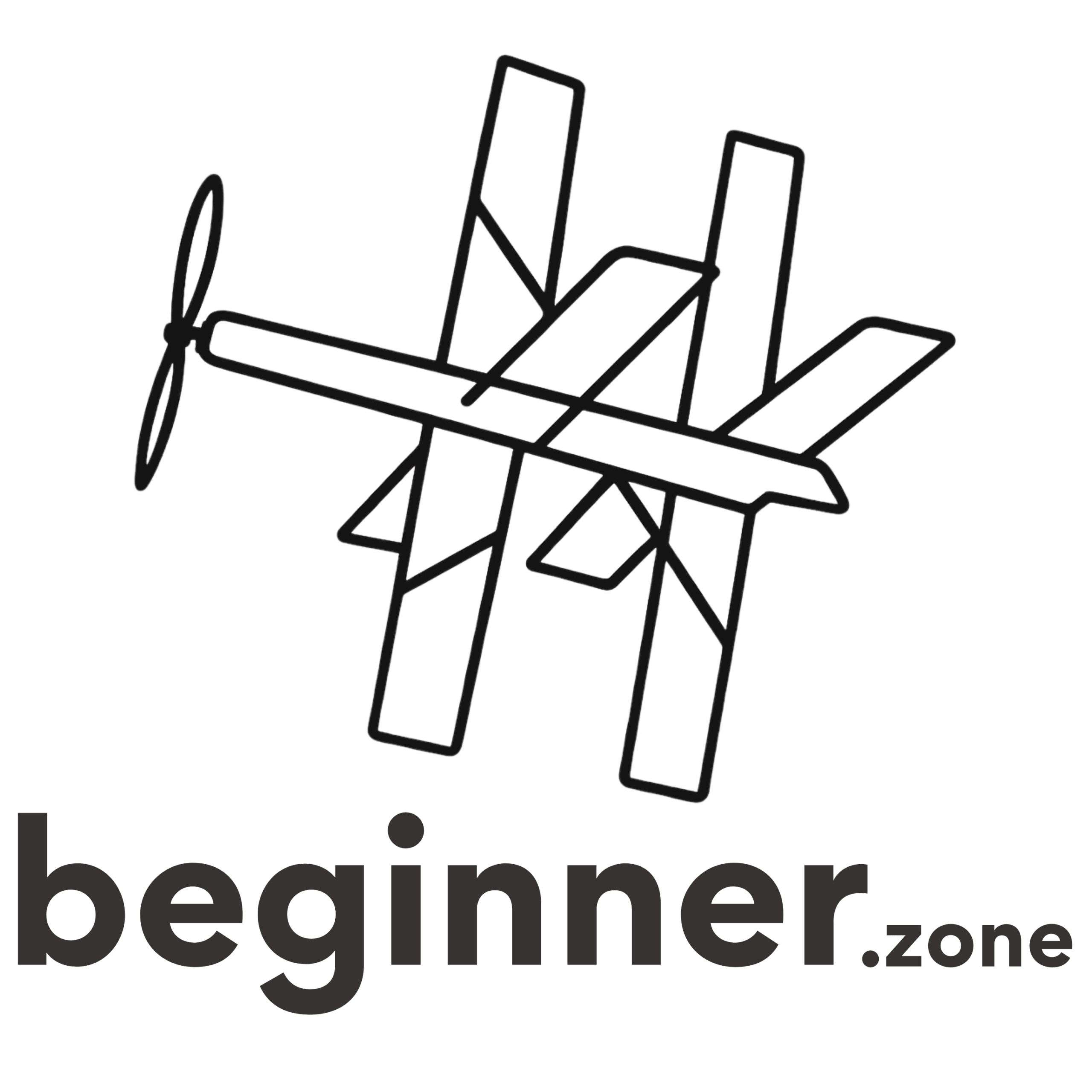
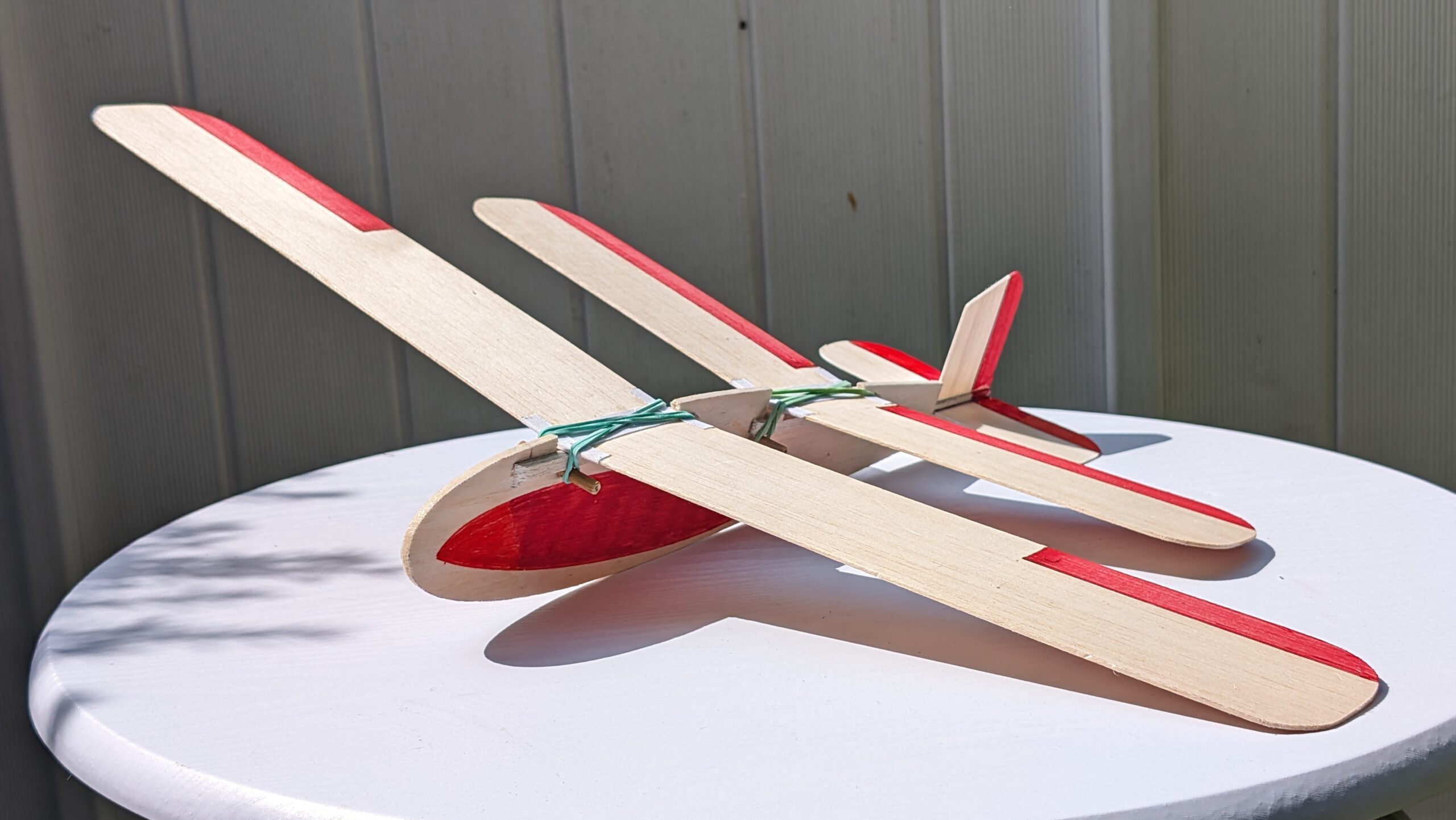
Leave a Reply